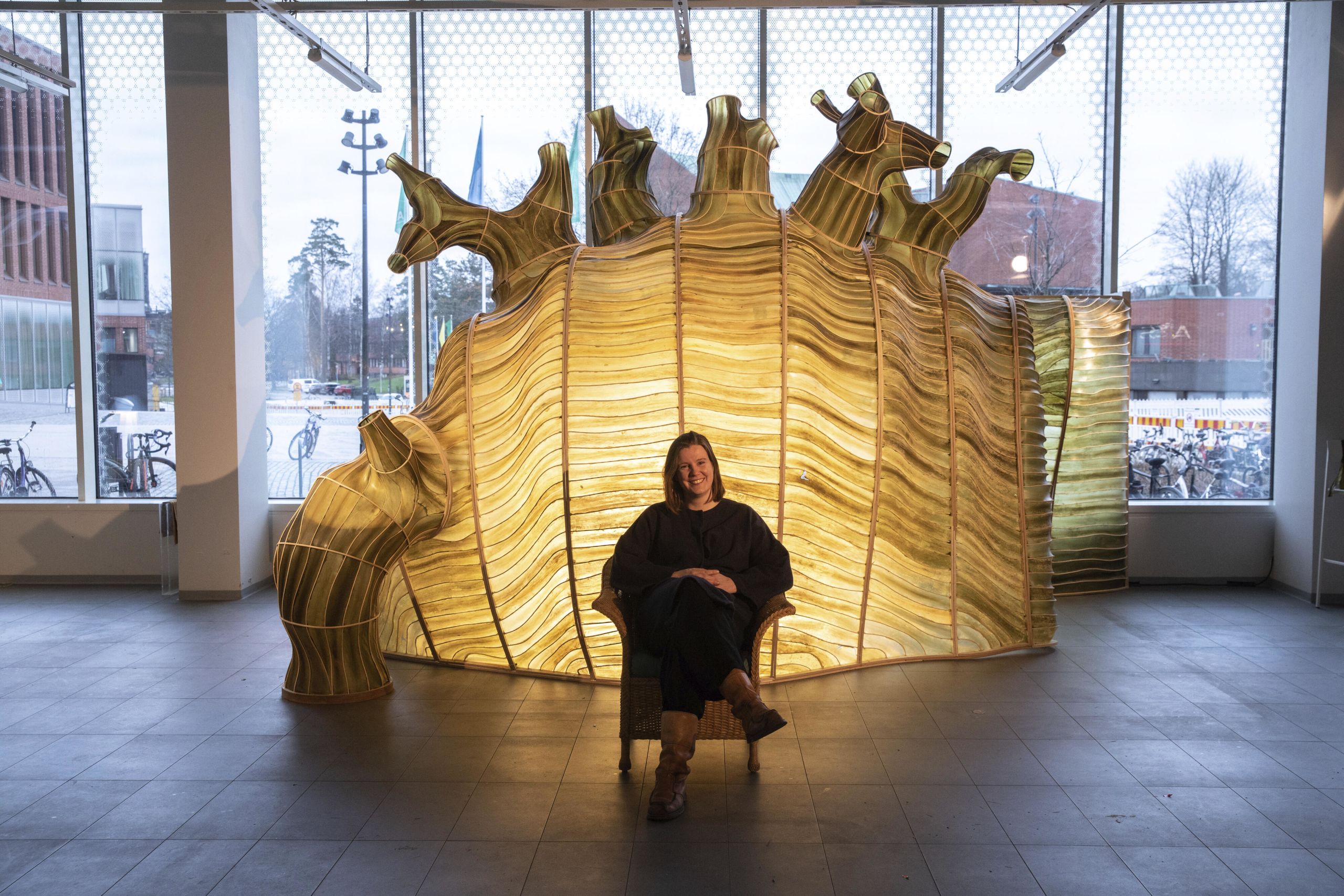Design as a real driver for change

At the 50th World Economic Forum Meeting in Davos in 2020, Julia Lohmann’s magnificent seaweed pavilion encouraged world leaders to make difficult decisions and establish a ‘do-tank’ way of collaborating. The installation underlined, that design can play a major role in realizing changes on a vast scale. But we need to redefine design from ‘we make objects’ to ‘we enable change for sustainability'. The pavilion represents 'The Department of Seaweed’, a community of practice Julia Lohmann founded around the sustainable development of seaweed as a material for making.
World leaders gather each January at the World Economic Forum Annual Meeting in Davos, Switzerland. In 2020, in the hallway connecting the main plenary sessions, a multisensorial seaweed pavilion invited delegates to workshop with seaweed as a material. The pavilion entitled Hidaka Ohmu represented The ‘Department of Seaweed’, a community of practice founded by Julia Lohmann, Designer and Professor of Practice in Contemporary Design at Aalto University. The Department of Seaweed explores the sustainable development of seaweed as a material for making. With her fascinating and thought-provoking seaweed sculptures and interventions, Lohmann joins the ranks of Greta Thunberg, Sylvia Earle and Al Gore to call for urgent changes to address the climate crisis.
Seaweed is one of the few organisms that can be farmed sustainably, it’s the 'bamboo of the oceans'. We can eat seaweed, but we could also make bioplastic, alternatives to leather and textiles out of it. The Department of Seaweed tries to be the midwife of seaweed and help it reach society. The collective is trying to embed this new produce into educational frameworks, local crafts and cuisines — in a sustainable volume.
Seaweed represents one design method for finding a new, sustainable material world. But the ultimate aim of The Department of Seaweed is to integrate design into decision-making and thus activate people for making change. Design has helped create our world of overconsumption, so designers should contribute to finding solutions for a more sustainable world. Julia Lohmann calls for alternative ways of doing instead of endless meetings and reports.

Julia Lohmann inside the seaweed pavilion.
Julia Lohmann inside the seaweed pavilion.
In Davos, The Department of Seaweed had three important messages to world leaders:
First, be conscious of every decision you make. Ask yourself: Is this really necessary? What long-term impact does it have? Always think a couple of generations ahead.
Secondly, do things differently. We have many think tanks but now we need to establish ’do tanks’. We should embed design into the process of decision-making because design is the discipline of doing.
Thirdly, start taking remedial actions. We have to be more agile and build links between science and society. Our response to change must be collective and comprehensive.

Design can play a role in realizing changes on a vast scale by making abstract things relatable. Designers are helping people make sense of science, empowering them to tackle the complex challenges we are facing. However, design needs to be redefined from ‘we make objects’ to ‘we enable change for sustainability’. There are quite a few designers who want to work in this way, but there are not enough possibilities for them to survive financially.


And what about the World Economic Forum? These over 3,000 leaders of business, international politics and culture, economists, celebrities and journalists could be the starting point. These people of power could invite designers to sit in each plenary session, and use that as a briefing: here’s the network of people who want to make that change. As designers, we could help in visualizing what changes are necessary and involve participants in enacting some of the changes that have been proposed.
The Department of Seaweed acts as a real driver for change with its fascinating and thought-provoking seaweed sculptures and interventions. It also won the the sustainable design category for Dezeen Awards 2020.
Julia Lohmann, internationally acknowledged designer and professor of practice in contemporary design at Aalto University, was one of the 40 cultural leaders invited to the World Economic Forum Annual Meeting 2020. She decided to use this public platform to make an important statement about transitioning to sustainability with the power of design.


Department of Seaweed in Väre, Aalto University.
Department of Seaweed in Väre, Aalto University.

